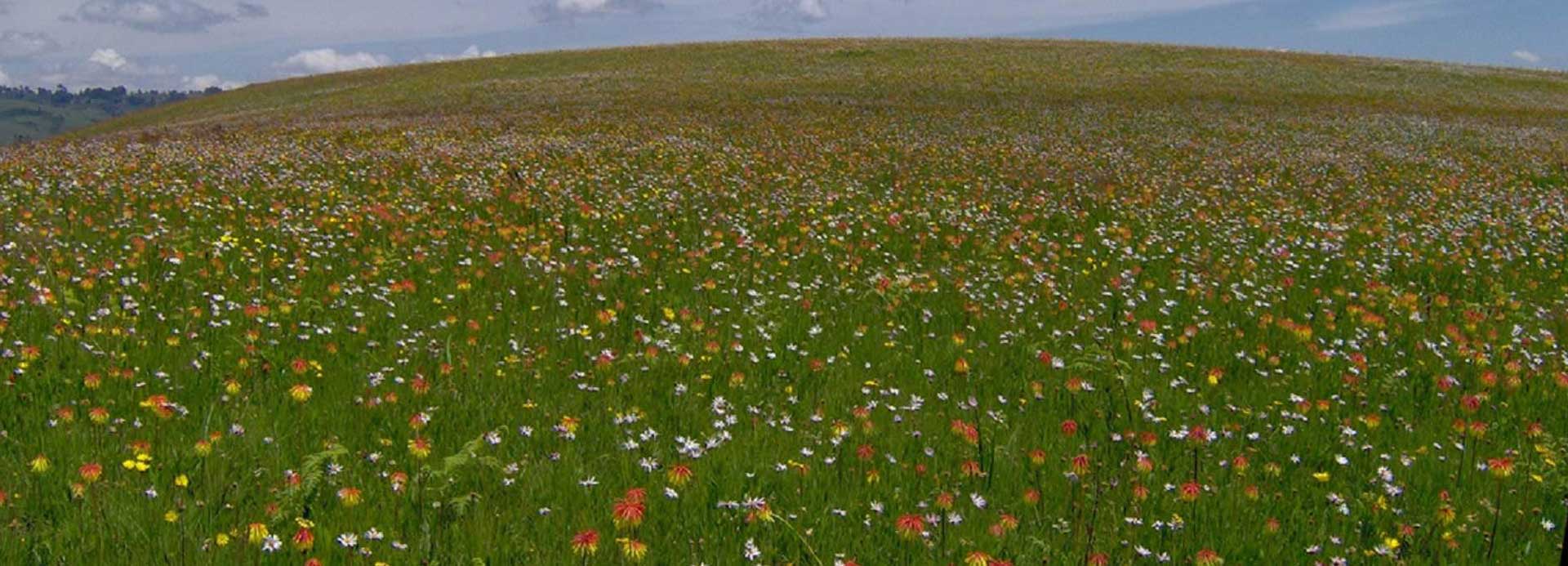Kitulo National Park
Kitulo National Park covers an area of 412.9 sq km (159 sq miles. The temporary park headquarters at Matamba are situated approximately 100km (60 miles) from Mbeya town.Located in Southern Tanzania.
Perched at around 2,600 meters and (8,500 ft) between the rugged peaks of the Kipengere, Poroto and Livingstone Mountains. The well-watered volcanic soils of Kitulo support the largest and most important montane grassland community in Tanzania.
“Garden of God”
One of the most important watersheds for the Great Ruaha River, Kitulo is well known for its floral significance, not only a multitude of orchids, but also the stunning yellow-orange red-hot poker. A variety of aloes, proteas, geraniums, giant lobelias, lilies and aster daisies, of which more than 30 species are endemic to southern Tanzania.
Big game is sparsely represented, though a few hardy mountain reedbuck and eland still roam the open grassland. Locals refer to the Kitulo Plateau as Bustani ya Mungu – The Garden of God while botanists have dubbed it the Serengeti of Flowers, host to ‘one of the great floral spectacles of the world’.
And Kitulo is indeed a rare botanical marvel, home to a full 350 species of vascular plants, including 45 varieties of terrestrial orchid.Which erupt into a riotous wildflower display of breathtaking scale and diversity during the main rainy season of late November to April.
Biological wealth of the Gods garden
Kitulo plateau as bustani ya – a botanist and hiker’s paradise – is also highly alluring to birdwatchers. Tanzania’s only population of the rare Denham’s bustard is resident, alongside a breeding colony of the endangered blue swallow.Other such range-restricted species as mountain marsh widow, Njombe cisticola and Kipengere seed-eater.
Endemic species of butterfly, chameleon, lizard and frog further enhance the biological wealth of God’s Garden.
Park Highlights Include:
- Locals refer to the Kitulo Plateau as Bustani ya Mungu – The Garden of God, while botanists have dubbed it the Serengeti of Flowers.
- Wildflower displays peak between December and April. The sunnier months of September to November are more comfortable for hiking but less rewarding for botanists.
- Good hiking trails exist and will soon be developed into a formal trail system. Open walking across the grasslands to view birds and wildflowers. A half day hike from the park across the Livingstone Mountains leads to Matema Beach on Lake Nyasa
- The gap of Numbi valley is occupied by Juniper Forest, one of the most extensive in East Africa. Towering up to 50 M these are among the tallest junipers in the world.

